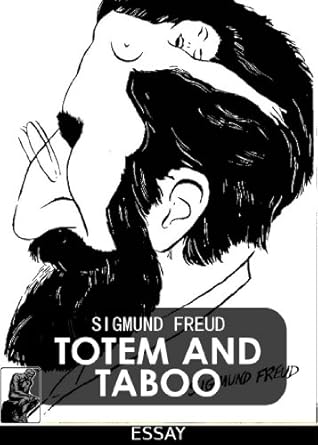More on this book
Community
Kindle Notes & Highlights
The taboo restrictions are different from religious or moral prohibitions. They are not traced to a commandment of a god but really they themselves impose their own prohibitions; they are differentiated from moral prohibitions by failing to be included in a system which declares abstinences in general to be necessary and gives reasons for this necessity. The taboo prohibitions lack all justification and are of unknown origin. Though incomprehensible to us they are taken as a matter of course by those who are under their dominance.
An individual who has violated a taboo becomes himself taboo because he has the dangerous property of tempting others to follow his example. He arouses envy; why should he be allowed to do what is prohibited to others? He is therefore really contagious, in so far as every example incites to imitation, and therefore he himself must be avoided.
It is hardly astonishing that the need was felt to isolate dangerous persons like chiefs and priests, by building a wall around them which made them inaccessible to others. We surmise that this wall, which originally was constructed out of taboo rules, still exists today in the form of court ceremony.
Among the Maori any one who had touched a corpse or who had taken part in its interment, became extremely unclean and was almost cut off from intercourse with his fellow beings; he was, as we say, boycotted.
Taboo is a command of conscience, the violation of which causes a terrible sense of guilt.which is as self-evident as its origin is unknown.
In art alone it still happens that man, consumed by his wishes, produces something similar to the gratification of these wishes and this playing, thanks to artistic illusion, calls forth affects as if it were something real. We rightly speak of the magic of art and compare the artist with a magician. But this comparison is perhaps more important than it claims to be. Art, which certainly did not begin as art for art’s sake, originally served tendencies which today have for the greater part ceased to exist.
Thus totemism arises, not from a religious, but from a prosaic everyday need of mankind. The giving of names, which is the essence of totemism, is a result of the technique of primitive writing. The totem is of the nature of an easily represented writing symbol.
To eat and drink with some one was at the same time a symbol and a confirmation of social community and of the assumption of mutual obligations; the sacrificial eating gave direct expression to the fact that the god and his worshipers are communicants, thus confirming all their other relations.
People do not commit the excesses which at all times have characterized holidays, as a result of an order to be in a holiday mood, but because in the very nature of a holiday there is excess; the holiday mood is brought about by the release of what is otherwise forbidden.
We have heard that members of a clan become holy through the consumption of the totem and thereby also strengthen their identification with it and with each other.
Society is now based on complicity in the common crime, religion on the sense of guilt and the consequent remorse, while morality is based partly on the necessities of society and partly on the expiation which this sense of guilt demands.
The father therefore really appears twice in the scene of sacrifice before the tribal god, once as the god and again as the totem-sacrificial-animal.
Thus the memory of that first great act of sacrifice had proved to be indestructible despite all attempts to forget it, and just at the moment when men strove to get as far away as possible from its motives, the undistorted repetition of it had to appear in the form of the god sacrifice.
We have interpreted the first rules of morality and moral restrictions of primitive society as reactions to a deed which gave the authors of it the conception of crime. They regretted this deed and decided that it should not be repeated and that its execution must bring no gain. This creative sense of guilt has not become extinct with us.


